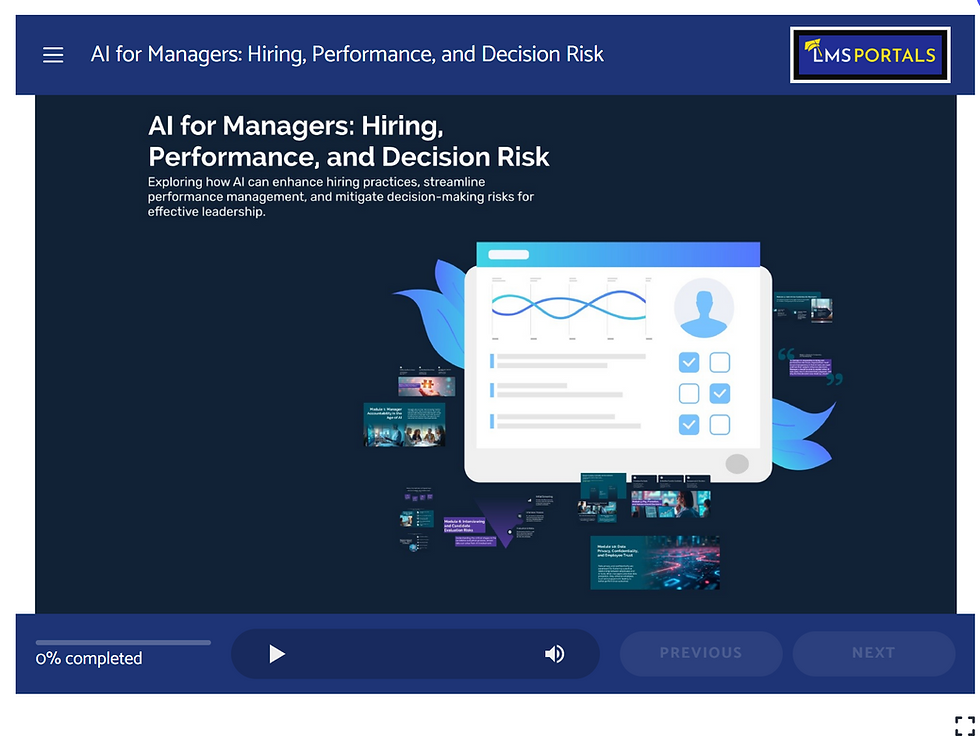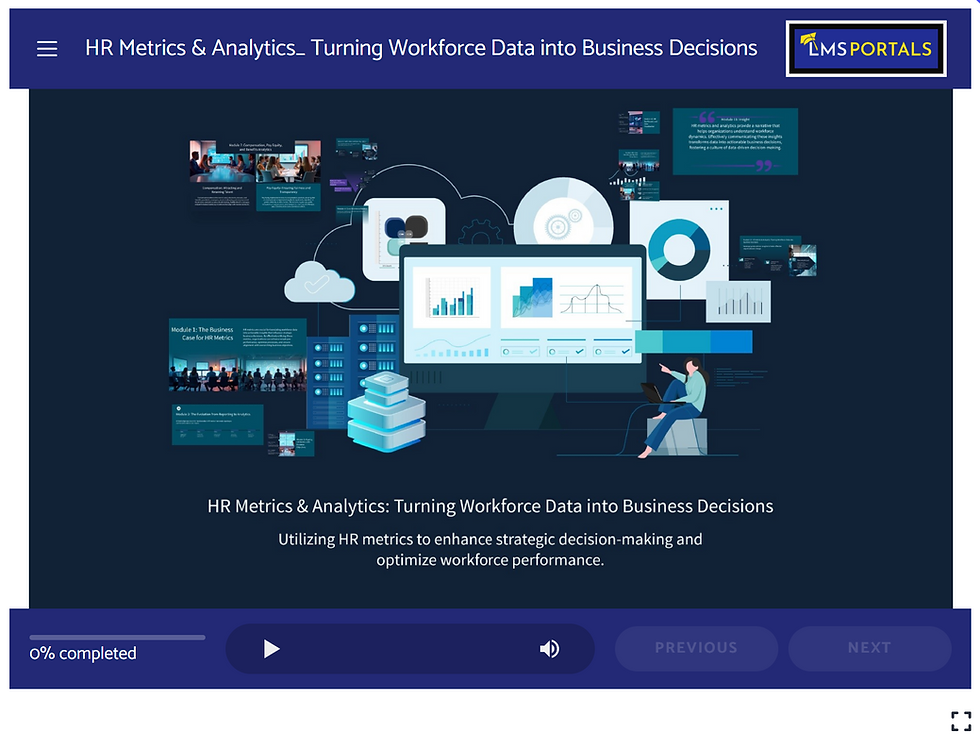Seven Critical Learning Paths for Today’s Workplace
- LMSPortals

- Apr 24, 2023
- 4 min read

A learning path is a structured approach to learning that outlines a sequence of courses or learning activities designed to help learners acquire specific knowledge or skills. It is a step-by-step guide that provides a clear roadmap for learners to follow in order to achieve their learning goals.
A learning path may include various types of learning resources, such as videos, articles, quizzes, interactive activities, and assessments. The resources are typically organized in a specific order, based on the level of difficulty or complexity, to provide learners with a logical and progressive learning experience.
Learning paths can be tailored to different levels of learners, from beginners to advanced learners, and can be designed for different topics or skills, such as programming, data analysis, project management, or leadership. They can be delivered through various platforms, such as e-learning platforms, learning management systems, or online courses.
The Importance of Learning Paths for Employee Development
Learning paths are crucial for employee development because they provide a clear roadmap for employees to acquire the knowledge and skills they need to succeed in their roles and advance their careers.
Here are some key reasons why learning paths are important for employee development:
Increases Job Performance
Learning paths help employees develop the specific skills and knowledge they need to perform their job duties effectively, which can increase their job performance and productivity.
Supports Career Advancement
Learning paths help employees acquire the skills and knowledge they need to advance their careers, whether within their current organization or in a different one.
Fosters Employee Engagement and Retention
Learning paths demonstrate an organization's commitment to employee development, which can foster employee engagement and retention. Employees who feel valued and supported in their professional growth are more likely to stay with an organization.
Promotes Continuous Learning
Learning paths encourage employees to engage in continuous learning, which is essential in today's rapidly changing work environment. Employees who continuously learn and develop their skills are better equipped to adapt to changes and stay competitive in their careers.
Aligns with Organizational Goals
Learning paths can be designed to align with organizational goals and objectives, ensuring that employees are acquiring the skills and knowledge needed to achieve the organization's strategic objectives.
Tips for Creating Effective Learning Paths
Creating effective learning paths requires careful planning and consideration. Here are some tips for creating effective learning paths:
Define clear learning objectives: Clearly define the learning objectives of the learning path, based on the specific skills and knowledge that employees need to acquire. This will help ensure that the learning path is focused and relevant to the needs of the learners.
Identify the target audience: Identify the target audience for the learning path, including their skill level and learning preferences. This will help tailor the learning path to the needs and preferences of the learners.
Use a variety of learning resources: Use a variety of learning resources, such as videos, articles, interactive activities, and assessments, to cater to different learning styles and preferences.
Organize the learning resources logically: Organize the learning resources in a logical order, based on the level of difficulty or complexity, to provide learners with a progressive and cohesive learning experience.
Incorporate assessments and feedback: Incorporate assessments and feedback to measure learners' progress and provide them with feedback on their performance. This will help learners track their progress and identify areas where they need to improve.
Provide opportunities for practice and application: Provide opportunities for learners to practice and apply the skills and knowledge they have acquired through real-world scenarios, case studies, or simulations.
Continuously update and improve the learning path: Continuously update and improve the learning path based on feedback from learners and changes in the industry or organizational needs.
Seven Critical Learning Paths for Today’s Workplace
The workplace is constantly evolving, and it's essential for employees to stay updated with the latest trends and skills to succeed in their careers. Here are seven critical employee learning paths for today's workplace:
1. Digital Literacy and Technology Skills
With technology advancing rapidly, it's important for employees to be proficient in digital literacy and technology skills. Learning paths may include online security, data analysis, programming, web development, and cloud computing.
2. Soft Skills Development
Soft skills such as communication, teamwork, leadership, and time management are highly valued in the workplace. Employees can take courses or attend workshops to enhance their soft skills and improve their overall performance.
3. Industry-specific Training
Industry-specific training helps employees stay updated with the latest trends and regulations in their field. It may include technical training, certification courses, or seminars on industry-related topics.
4. Diversity, Equity, and Inclusion (DEI) Training
DEI training helps employees understand and navigate different cultures and perspectives in the workplace. This training may include workshops on unconscious bias, inclusive communication, and cultural competency.
5. Project Management
Project management skills are highly valued in today's workplace. Learning paths may include courses on project planning, risk management, stakeholder communication, and project evaluation.
6. Wellness and Self-care
Wellness and self-care training can help employees manage stress and maintain a healthy work-life balance. It may include workshops on mindfulness, time management, and stress reduction.
7. Language Skills
In today's global economy, language skills are highly valued. Employees can take language courses or attend language exchange programs to improve their language skills and enhance their cultural understanding.
About LMS Portals
At LMS Portals, we provide our clients and partners with a SaaS-based, multi-tenant learning management system that allows you to launch a dedicated training environment (a portal) for each of your unique audiences.
The system includes built-in, SCORM-compliant course authoring software that enables most anyone to build engaging courses quickly and easily.
We also offer a complete library of ready-made courses, covering most every aspect of corporate training and employee development.
If you choose to, you can create Learning Paths to deliver courses in a logical progression and add structure to your training program. The system also supports Virtual Instructor-Led Training (VILT) and provides tools for social learning.
Together, these features make the LMS Portals platform the ideal solution for your employee training and development program with the effective use of customized learning paths.
Contact us today to get started or visit our Partner Program pages



Comments